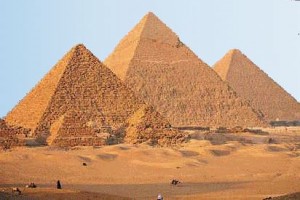 Standing for 5,000 years in the Egyptian desert, the pyramids and other grand monuments constructed by the ancient Egyptians are marvels of art, archaeology, and technology.
Standing for 5,000 years in the Egyptian desert, the pyramids and other grand monuments constructed by the ancient Egyptians are marvels of art, archaeology, and technology.
In January, students in a new interim-abroad course will travel to Egypt to get up close with these magnificent structures as they study the relationship between art and technology.
“While art would not exist without technology, creativity and an ‘artistic’ mindset are also required to make advances in technology,” says Ingrid Furniss, assistant professor of art.
Furniss and Sharon Jones, professor of civil engineering and director of the engineering division, are leading the course, Engineering in a Global and Societal Context.
Students will explore how the political, social, and religious historical context has led to the creation of art and the development of technology in Egypt, and how archaeology, technology, and scientific study have contributed to knowledge about the past. Students will get an introduction to archaeology, Egyptology, and Arabic, and will also learn about modern development issues in Cairo.
“Egypt is the largest Arabic-speaking country in the world in terms of population,” Jones says. “We are focused on the synergy between art and technology, and how that manifested itself in terms of ancient Egypt.”
The class will visit several of Egypt’s world-famous archaeological sites, including the pyramids at Giza, Luxor Temple, Queen Hatshepsut’s funerary mausoleum, and the Valley of the Kings, and will also go to the Egyptian Museum, which has a very large collection of ancient Egyptian artifacts.
They will travel the Nile River by boat and reflect on the role of the river as a means of transportation in ancient times and its impact on Egyptian culture, society, and arts. Additionally, students will have the opportunity to interact with Egyptian archaeologists, as well as liberal arts and engineering students at American University in Cairo.
“My goal for the course is twofold: for students to gain an appreciation for art and archaeology as tools for understanding ancient and modern peoples and ways of life,” Furniss says, “and for students to understand the intimate relationship between technology and art in the ancient and modern world.”
